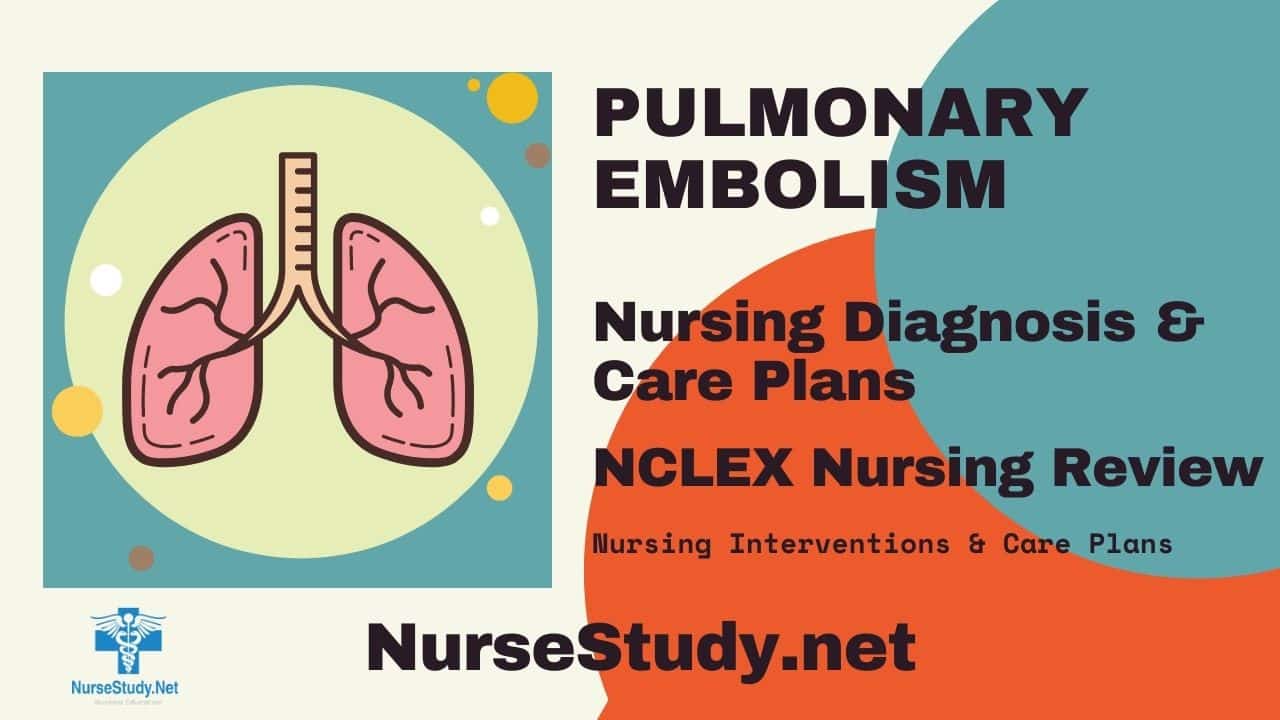Pulmonary embolism occurs when a blood clot lodges in one or more pulmonary arteries, blocking blood flow to portions of the lung. If not identified and treated promptly, this blockage can lead to life-threatening complications. Most commonly, these clots originate from deep vein thrombosis (DVT) in the legs.
Key Clinical Manifestations
Common signs and symptoms of pulmonary embolism include:
- Sudden onset dyspnea
- Sharp chest pain, especially during inspiration
- Tachycardia
- Anxiety and restlessness
- Cough, sometimes with bloody sputum
- Decreased oxygen saturation
- Hypotension in severe cases
- Diaphoresis
- Syncope or near-syncope
Risk Factors
Understanding risk factors is crucial for proper assessment:
- Extended immobility
- Recent surgery or trauma
- Cancer
- History of DVT or PE
- Pregnancy and postpartum period
- Obesity
- Smoking
- Oral contraceptive use
- Advanced age
- Genetic clotting disorders
Nursing Assessment
Primary Assessment Components
Respiratory Status:
- Monitor respiratory rate and pattern
- Assess oxygen saturation
- Auscultate lung sounds
- Note the use of accessory muscles
Cardiovascular Status:
- Monitor vital signs
- Assess peripheral pulses
- Check for signs of DVT in extremities
- Monitor cardiac rhythm
Neurological Status:
- Assess the level of consciousness
- Monitor for confusion or anxiety
- Check for signs of cerebral hypoxia
Diagnostic Tests
Key diagnostic procedures nurses should be familiar with:
- D-dimer blood test
- Arterial blood gases
- CT pulmonary angiogram
- V/Q scan
- ECG
- Chest X-ray
Top 5 Nursing Care Plans for Pulmonary Embolism
Nursing Care Plan 1. Impaired Gas Exchange
Nursing Diagnosis Statement:
Impaired gas exchange related to ventilation-perfusion mismatch secondary to pulmonary embolism as evidenced by hypoxemia, dyspnea, and decreased oxygen saturation.
Related Factors:
- Alveolar-capillary membrane changes
- Ventilation-perfusion imbalance
- Pulmonary blood flow disruption
Nursing Interventions and Rationales:
Monitor oxygen saturation and ABGs
- Rationale: Provides early detection of deterioration
Position patient in semi-Fowler’s position
- Rationale: Optimizes lung expansion and ventilation
Administer oxygen therapy as prescribed
- Rationale: Improves tissue oxygenation
Monitor for signs of respiratory distress
- Rationale: Enables early intervention
Desired Outcomes:
- Patient maintains oxygen saturation >95% on prescribed oxygen
- Demonstrates improved ABG values
- Reports decreased dyspnea
Nursing Care Plan 2. Decreased Cardiac Output
Nursing Diagnosis Statement:
Decreased cardiac output related to increased pulmonary vascular resistance secondary to pulmonary embolism as evidenced by tachycardia, hypotension, and decreased peripheral perfusion.
Related Factors:
- Altered preload
- Increased afterload
- Compromised pulmonary blood flow
Nursing Interventions and Rationales:
Monitor vital signs and hemodynamic parameters
- Rationale: Detects early signs of cardiovascular compromise
Administer prescribed anticoagulants
- Rationale: Prevents clot progression
Monitor fluid balance
- Rationale: Prevents volume overload while maintaining adequate tissue perfusion
Position patient to optimize venous return
- Rationale: Improves cardiac output
Desired Outcomes:
- Maintains stable vital signs
- Demonstrates improved peripheral perfusion
- Reports decreased symptoms of cardiac compromise
Nursing Care Plan 3. Anxiety
Nursing Diagnosis Statement:
Anxiety related to acute illness and fear of death as evidenced by expressed concerns, restlessness, and increased vital signs.
Related Factors:
- Threat to health status
- Fear of death
- Unfamiliarity with environment
- Situational crisis
Nursing Interventions and Rationales:
Provide clear, concise information
- Rationale: Reduces fear of the unknown
Maintain a calm, reassuring presence
- Rationale: Helps reduce anxiety
Teach relaxation techniques
- Rationale: Provides coping mechanisms
Include family in care planning
- Rationale: Enhances support system
Desired Outcomes:
- Demonstrates reduced anxiety levels
- Uses effective coping mechanisms
- Reports feeling more confident about treatment
Nursing Care Plan 4. Risk for Bleeding
Nursing Diagnosis Statement:
Risk for bleeding related to anticoagulation therapy.
Related Factors:
- Anticoagulation therapy
- Altered clotting process
- Multiple invasive procedures
Nursing Interventions and Rationales:
Monitor for bleeding signs
- Rationale: Enables early detection of complications
Monitor coagulation studies
- Rationale: Ensures therapeutic anticoagulation
Educate about bleeding precautions
- Rationale: Prevents injury
Use minimal trauma techniques
- Rationale: Reduces bleeding risk
Desired Outcomes:
- Maintains therapeutic anticoagulation without bleeding
- Demonstrates understanding of bleeding precautions
- Shows no signs of bleeding
Nursing Care Plan 5. Knowledge Deficit
Nursing Diagnosis Statement:
Knowledge deficit related to unfamiliarity with condition and treatment plan as evidenced by questions and expressed concerns.
Related Factors:
- Lack of exposure to information
- Misinterpretation of information
- Unfamiliarity with resources
Nursing Interventions and Rationales:
Provide education about the condition
- Rationale: Increases understanding and compliance
Teach medication management
- Rationale: Ensures proper treatment
Instruct about lifestyle modifications
- Rationale: Prevents recurrence
Provide written materials
- Rationale: Reinforces learning
Desired Outcomes:
- Demonstrates understanding of the condition
- Shows proper medication management
- Implements lifestyle modifications
Prevention Strategies
Essential preventive measures include:
- Early mobilization
- Proper anticoagulation
- Use of compression devices
- Adequate hydration
- Regular exercise
- Smoking cessation
- Weight management
References
- American Journal of Nursing (2023). “Current Evidence-Based Practice in Pulmonary Embolism Care.” 123(4), 45-52.
- Journal of Clinical Nursing (2023). “Nursing Interventions in Acute Pulmonary Embolism: A Systematic Review.” 32(1), 15-28.
- Critical Care Nurse (2022). “Implementation of Evidence-Based Protocols for PE Management.” 42(3), 22-35.
- International Journal of Nursing Studies (2023). “Outcomes of Standardized Nursing Care Plans in PE.” 89, 103-115.
- Journal of Emergency Nursing (2023). “Early Recognition and Management of PE: A Nursing Perspective.” 49(2), 178-190.
- Nursing Research (2022). “Quality Indicators in PE Care: A Multi-Center Study.” 71(6), 401-412.

Comments are closed.